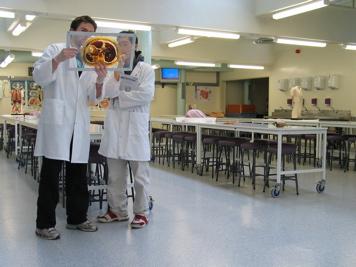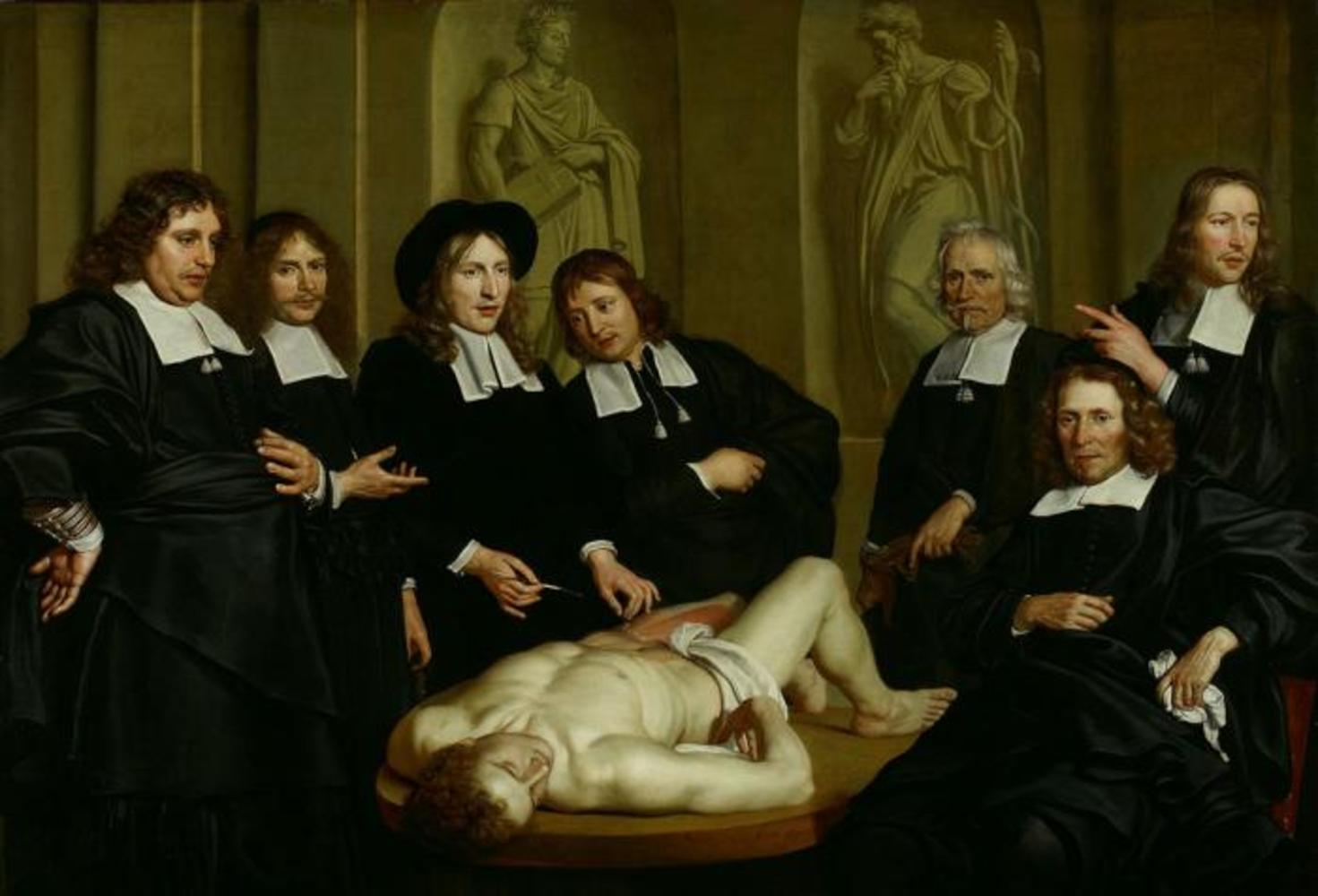Cutting up human bodies to see how they work has been a long tradition in medical education, but for many who donate their body it will disappear into a world of the unknown. Donated to Science, a new documentary by New Zealand-based film-maker and physician Paul Trotman, shows viewers what really happens to bodies that are donated to medical school. The film, already popular in New Zealand, receives its first UK public screening on Thursday 19th January 2011 at the Royal College of Surgeons in London.
 The concept of human dissection stirs powerful emotions, which range from fascination to horror. I vividly remember, as a nervous 18 year old, my first day of medical school. Finding myself in a room full of 40 naked, dead bodies, I was not at all sure what I was supposed to feel. Terror? Excitement? Sadness? In my case, it was a numb, sick feeling that planted itself inside me and persisted for weeks. And it was several dissection sessions later, when the nausea was wearing off and I finally felt safe from fainting and was beginning to think that I could enjoy anatomy, that I made my first connection with my cadaver: I was positioning her while my colleague dissected the inner arm when I suddenly realised that I was holding her hand.
The concept of human dissection stirs powerful emotions, which range from fascination to horror. I vividly remember, as a nervous 18 year old, my first day of medical school. Finding myself in a room full of 40 naked, dead bodies, I was not at all sure what I was supposed to feel. Terror? Excitement? Sadness? In my case, it was a numb, sick feeling that planted itself inside me and persisted for weeks. And it was several dissection sessions later, when the nausea was wearing off and I finally felt safe from fainting and was beginning to think that I could enjoy anatomy, that I made my first connection with my cadaver: I was positioning her while my colleague dissected the inner arm when I suddenly realised that I was holding her hand.
Now some years on from my own experience of dissection, I met with Paul Trotman when he came to take part in an episode of the Naked Scientists to talk about the impact his film has had on audiences across his home country. Donated to Science follows the complete story of body donation, beginning with interviews with the donors and then with participating medical students.
"We were able to interview them [the students] before they had ever been in the dissection room. We got the anticipation and the nerves, then we got them meeting the body."
The climax of the film comes when the students finally come face to face with their donors as they watch the original interview with the person they have worked on, something that very few medical students or doctors will have ever had the opportunity to experience.
And as Trotman emphasises, "it's not really a film about dying, and it's not really a film about death. It's about the relationship between the medical students and the body they dissect, and about the people who donate their bodies."
But, somewhat worryingly, this traditional approach to teaching human anatomy, where small groups of students each work on a dedicated cadaver, is on the decline. Three of the four new medical schools that opened in the UK in 2002-2003 do not offer dissection as part of the course, something that Trotman feels very strongly about.
"I was the last person I would possibly have expected to end up back in the dissection room for a second go ... I hated it. I was quite young when I did it and I guess it was hard dealing with a corpse when you'd never seen a dead body before. I've only learned more recently quite how good doing the dissection yourself is for actually learning the anatomy."
Instead, some medical schools offer prosections, where students see pre-dissected specimens prepared by experts. However, having a personal cadaver teaches medical students more than the structure of the body.
"The real thing that comes across in the film is that students learn far more than just anatomy from doing dissection. This is their first patient. They learn compassion, they learn dealing with death, they learn about themselves, they do a lot of growing up, and it changes them. It's their first step to becoming a doctor."
For me, dissection was the first time in my medical career that I felt someone had placed an enormous amount of trust in me. This person had trusted me to respect their body, and use it wisely.
But for some, the thought of having their body or that of a loved one taken apart is disturbing, a sentiment shared by some of the families of the patients featured in Donated to Science.
"They didn't want their loved one to be taken to pieces by medical students," says Trotman
So what reasons do people who do intend to donate give for wanting to leave their bodies for medical education? The reasons put forward by the patients in the film were "me or a member of my family has had a lot of input from the medical profession and I want to give something back," "I don't really want to have a funeral ...I don't want to leave that as a burden on my family," and "I'm not going to need it, I'll be dead."
Students at Otago Medical School, where Donated to Science was filmed, have had a rare opportunity to see interviews with their donors.
"We got the most extraordinary reactions ... The last 10 minutes of the film is a total emotional roller coaster. Our professor of anatomy who is an ex-surgeon still can't watch the end of the film without tearing up ... It's not often that you get somebody absolutely bear their soul while the camera's rolling."
 My last day in the dissection room was a memorial service for those who had donated their bodies to myself and fellow students. It was at this service that we learned the identities of people who had taught us so much. It shocked me to discover that my cadaver's name had been Lilly, a name that I associate with youth and beauty. It was only once I heard this name that I fully accepted that she had once been alive and young like me.
My last day in the dissection room was a memorial service for those who had donated their bodies to myself and fellow students. It was at this service that we learned the identities of people who had taught us so much. It shocked me to discover that my cadaver's name had been Lilly, a name that I associate with youth and beauty. It was only once I heard this name that I fully accepted that she had once been alive and young like me.
But getting to grips with human dissection is just one of the first rungs on the long ladder to becoming a competent doctor. Now Trotman's shooting a sequel to Donated to Science by following the same medical students as they now grapple with the emotional demands of the rest of their training. Indeed, life as a clinical student on the wards of a hospital, a journey upon which I embarked only a few months ago, can be every bit as shocking and emotionally harrowing as dissection.
"What we found in this film was that the students actually grew up a huge amount between the day before they'd been in the dissection room for the first time and the day they left the dissection room nearly two years later. And we're noticing similar changes in the students now as we're filming them on the wards. They're becoming a little bit more hardened to what's going on around them."
Donated to Science breaks down the barrier that has always existed between medical students and those who have donated their bodies. It gives students a chance to understand the thoughts and feelings of donors, while allowing potential donors and the general public to understand how and what students could learn from them. Trotman is emphatic that he did not set out with the aim to promote donation. "All I want to do is let people know what happens to their bodies and how they're treated, and let people look inside the dissection room and make their own minds up."
Read or listen to an interview with Paul Trotman here.
And here you can enjoy a 10 minute clip of Donated to Science:
| A clip of Paul Trotman's film Donated to Science |
- Previous Catching Energy From the Sun
- Next How do plants develop?










Comments
Add a comment